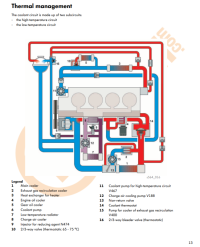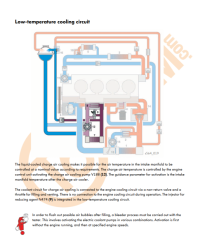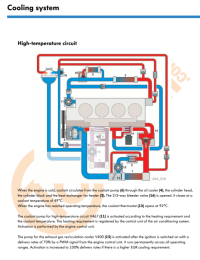I have an interesting problem and would appreciate inspiration.
My van (2016 Caravelle 204ps, 53k miles) has developed a coolant problem.
Symptoms / points known so far from non-invasive investigations:
My thoughts are it is either egr cooler or head. Most likely head. Either way expensive.
Any suggestions?
Has anyone got any ideas on how to rule out either without significant investigation?
Is it worth investigating now or keep using the vehicle to gather more evidence / see if it gets worse? Or am I at risk of becoming a smart-motorway statistic / trashing the engine completely?
Thanks in advance,
Chris
My van (2016 Caravelle 204ps, 53k miles) has developed a coolant problem.
Symptoms / points known so far from non-invasive investigations:
- Has alerted no coolant a few times shortly after engine start when still cool
- During alert, coolant tank is low but not empty
- When opening the tank (even when totally cold and been siting for days) system is under pressure and coolant returns into tank back up to normal level
- If I start / run the van after letting the coolant return to the reservoir it doesn’t disappear again for a unpredictable period of time.
- I have been unable to determine if it is actually losing any coolant as the level changes so much. But water is not known for it compressibility so must be going somewhere.
- It is due a service, last oil change was about 10k miles ago. Coolant was last changed 3 1/2 years ago, isn’t that dirty but it isn’t perfect. After starting it is slightly cloudy with perhaps a tiny brown tinge.
- No mayo on dipstick
- Van has always had mayo in filler cap; but I would subjectively say this is now worse.
- Van has always used oil, at the upper end of VWs spec but dealer said that it is normal.
- Regen happens more frequently than I think it should. Perhaps every 150 miles.
- EGR valve was replaced under warranty by dealer at 37k but they wouldn’t say why.
- No obvious soot or smoke of any kind
- No obvious smell of combustion gases in reservoir, I haven’t done a CO2 test yet to check more scientifically.
- When running and for a few minutes after stopping bubbles come through the pipe into the reservoir tank
- The rear heater doesn’t produce any heat. I don’t know if this is new.
- I haven’t done a compression test yet; however if it is holding pressure when cold it would suggest no significant leak
- No obvious leaks or wet patches
My thoughts are it is either egr cooler or head. Most likely head. Either way expensive.
Any suggestions?
Has anyone got any ideas on how to rule out either without significant investigation?
Is it worth investigating now or keep using the vehicle to gather more evidence / see if it gets worse? Or am I at risk of becoming a smart-motorway statistic / trashing the engine completely?
Thanks in advance,
Chris




